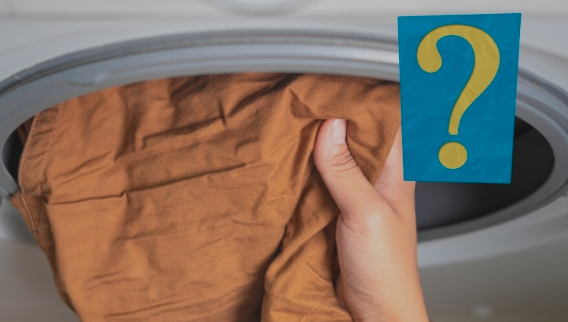Laundry Industry And Sustainable Fashion

The laundry industry and sustainable fashion are two seemingly unrelated sectors that, upon closer inspection, share a significant impact on environmental sustainability. As the global fashion industry continues to grow, so does the demand for laundry services to maintain and care for the ever-expanding wardrobe of consumers. This article explores the intricate relationship between the laundry industry and sustainable fashion, shedding light on the challenges and opportunities for creating a more eco-friendly future.
The Environmental Impact of Traditional Laundry Practices:
Traditional laundry practices are often associated with significant environmental concerns, ranging from excessive water usage and energy consumption to the release of harmful chemicals into water systems. Conventional washing machines, especially those with outdated technology, tend to use large amounts of water, contributing to water scarcity in some regions. Additionally, the energy-intensive nature of laundry operations, coupled with the prevalent use of fossil fuels, contributes to greenhouse gas emissions, exacerbating climate change.
Chemical-laden detergents and fabric softeners, commonly used in laundry, can contain harmful substances that find their way into water bodies, affecting aquatic ecosystems and posing risks to human health. The disposable nature of single-use laundry products further exacerbates the issue, leading to increased waste in landfills.
The Impact of the Fashion Industry on the Environment:
The fashion industry is notorious for its environmental footprint, primarily due to fast fashion practices that encourage the production of low-cost, quickly-changing clothing. The overconsumption and disposal of clothing contribute to textile waste, with a significant portion ending up in landfills. The production of textiles, particularly those derived from non-renewable resources like petroleum, has detrimental effects on ecosystems and biodiversity.
Moreover, the use of chemical dyes and finishes in fabric production and the energy-intensive processes involved in manufacturing garments contribute to pollution and resource depletion. The carbon footprint of transporting materials and finished products across the globe further amplifies the industry’s impact on climate change.
Sustainable Fashion Initiatives:
In response to the environmental challenges posed by the fashion industry, sustainable fashion initiatives have emerged, promoting responsible practices throughout the entire lifecycle of a garment. From sourcing eco-friendly materials and adopting ethical manufacturing processes to encouraging conscious consumer behavior, sustainable fashion seeks to minimize its environmental and social impact.
The Role of the Laundry Industry in Sustainable Fashion:
While sustainable fashion focuses on the production and consumption aspects of the clothing lifecycle, the laundry industry plays a crucial role in extending the lifespan of garments and reducing the need for frequent replacements. Adopting sustainable laundry practices aligns with the broader goals of the fashion industry’s sustainability initiatives.
Water and Energy Efficiency in Laundry:
Upgrading laundry facilities with energy-efficient machines and technologies can significantly reduce the environmental impact of the laundry process. High-efficiency washing machines, for example, use less water and energy while maintaining effective cleaning performance. Implementing water recycling systems further contributes to minimizing water usage.
Innovations in Detergents and Cleaning Agents:
The development of eco-friendly detergents and cleaning agents has gained momentum in recent years. These products aim to reduce the environmental impact of laundry by using biodegradable ingredients and excluding harmful chemicals. Some companies even offer refill stations, promoting a circular economy and reducing single-use plastic waste.
Encouraging Sustainable Consumer Behavior:
The laundry industry can contribute to sustainable fashion by educating consumers about responsible laundry habits. Informing individuals about proper garment care, such as washing clothes at lower temperatures and avoiding overuse of detergents, helps extend the lifespan of clothing and reduces the need for frequent washing.
Collaboration and Circular Economy Initiatives:
Collaboration between the laundry and fashion industries is essential for developing comprehensive solutions to environmental challenges. Establishing circular economy models, where clothing is designed for durability, repairability, and recyclability, can create a more sustainable ecosystem where garments are reused or repurposed rather than discarded.
The Future Landscape: Opportunities and Challenges:
As both the laundry and fashion industries navigate the path towards sustainability, numerous challenges and opportunities arise. The transition to sustainable practices requires investment in technology, research, and infrastructure, posing financial challenges for businesses. However, the long-term benefits, including cost savings and enhanced brand reputation, make the shift towards sustainability a strategic imperative.
Government regulations and consumer awareness are pivotal factors in driving change. Governments can incentivize businesses to adopt sustainable practices through policies and regulations, while consumers, armed with information about the environmental impact of their choices, can drive demand for eco-friendly laundry services and sustainable fashion.
Conclusion:
The intersection of the laundry industry and sustainable fashion presents a unique opportunity to address environmental challenges collectively. By adopting water and energy-efficient practices, embracing eco-friendly detergents, and promoting circular economy initiatives, the laundry industry can contribute significantly to the broader goals of sustainable fashion. Collaboration between stakeholders, including businesses, governments, and consumers, is essential for creating a greener future where the lifecycle of clothing is extended, and environmental impact is minimized. Together, these industries can pave the way for a more sustainable and ethical approach to clothing care and consumption, ultimately contributing to a healthier planet for future generations.




